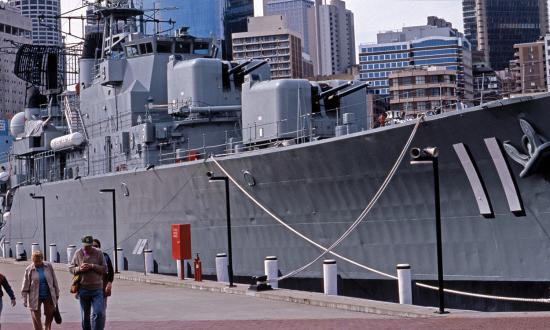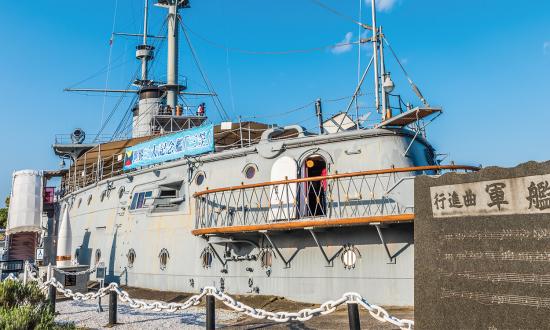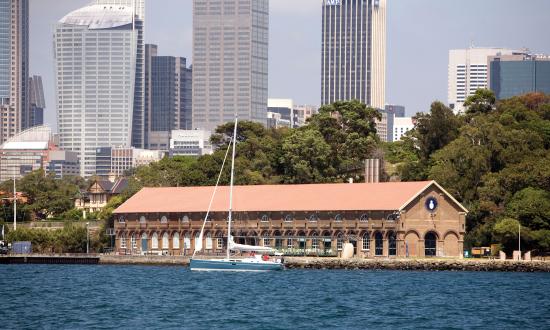After their highly successful attack on Pearl Harbor on 7 December 1941 and subsequent conquests from the Philippines to Singapore to the Dutch East Indies, the Japanese planned to advance even farther, challenging the British fleet and pushing it out of not just the Pacific Ocean—but the Indian Ocean as well.
The ambitious plan also included the invasion and occupation of Ceylon (present-day Sri Lanka), source of much of Britain’s rubber. Taking Ceylon would cut British supply lines to Australia and India and support the ongoing Japanese campaign in Burma. On Ceylon’s northeastern coast, a large Royal Navy base was located at Trincomalee, which the Japanese eyed covetously for their own ships.
Unexpectedly, the Imperial Japanese Army refused to supply troops for Ceylon, wanting to retain its soldiers for other theaters. Japanese Imperial Headquarters was divided into Army and Navy sections. Each issued orders to junior Army and Navy commanders and units. Each was independent of the other. Thus, joint planning and operation in campaigns was often difficult to achieve. Extensive bargaining and “horse-trading” sometimes were required to reach a compromise. The Imperial Japanese Navy was forced to alter its plans.
Kidō Butai vs. Somerville’s Eastern Fleet
On 9 March 1942, Admiral Isoroku Yamamoto, Commander-in-Chief of the Combined Fleet, issued the order for Operation C—the raid into the Indian Ocean. With a target date of April 1942, Operation C aimed to destroy the British Eastern Fleet and cut British communications across the Bay of Bengal.
Commanded by Vice Admiral Chuichi Nagumo, who also had led the attack on Pearl Harbor, the Japanese First Air Fleet, the Kidō Butai (“Mobile Force”), consisted of Carrier Division 5—the Akagi, Shokaku, and Zuikaku—and Carrier Division 2—the Sōryū and Hiryū. Additional forces were four Kongō-class battleships as well as two Tone-class cruisers (one source lists three).
This was the fleet that had bombed Pearl Harbor and recently had destroyed much of the north Australian city of Darwin. Nagumo was a specialist in torpedo and destroyer tactics but had little experience with, or understanding of, naval aviation. His force was supplemented by Vice Admiral Jisaburō Ozawa and his independent command of a light carrier, seven cruisers, and 11 destroyers. Ozawa’s ships were to attack Allied convoys in the area.
The Japanese also had placed submarines outside Colombo and Trincomalee. Japanese intelligence provided information that British naval and air forces in the Ceylon area were substantial.
Following the loss of Singapore, Admiral Sir Geoffrey Layton was designated as the Commander-in-Chief, Ceylon. He had command over all British forces on the island. In March 1942, Vice Admiral Sir James Somerville was named Commander-in-Chief, Eastern Fleet. He previously had taken part in the hunt for and destruction of the German battleship Bismarck.
On paper, the British force appeared strong. Viewed more closely, serious problems quickly became evident. Correctly assessing those problems and his ships’ capabilities, Somerville divided the vessels into two groups based on their speeds. Force A included the carriers HMS Formidable and Indomitable, the battleship HMS Warspite (serving as flagship), cruisers, and destroyers. The two carriers were new and not completely sea-ready. Their aircraft were older models: some 45 Fairey Albacore torpedo bombers plus 33 fighters—12 Martlets (the British version of the Grumman’s F4F Wildcat), 12 Fairey Fulmars, and nine Hawker Sea Hurricanes.
Force B was slower, comprising Britain’s oldest carrier, HMS Hermes, with 15 older-model aircraft and four slow, World War I–era Revenge-class battleships. Ship crews and aircrews alike lacked training.
Following the fall of Singapore in February 1942, the Royal Navy had moved its East Indies Station to Colombo on Ceylon’s southwest coast but later relocated to Trincomalee on the opposite coast.
British intelligence picked up on the pending Japanese attack and anticipated Japanese forces to sail on 26 March from their refueling base in Staring Bay, Dutch East Indies, which they did. Somerville decided to avoid Japanese forces during the day and launch night torpedo strikes using his radar-equipped Fairey Albacore torpedo bombers. Having studied the lessons of Pearl Harbor, the British strongly reinforced their air forces and antiaircraft defenses on Ceylon. There, three Hawker Hurricane squadrons and three squadrons of two-seater Fulmar fighters were assigned to the defense. One squadron of Bristol Blenheim bombers and two groups of PBY Catalinas completed the air forces.
South of Ceylon
Expecting a Japanese attack on 1 April, Somerville ordered his ships to sail to the south of Ceylon on 30 March. Land forces were alerted. Land-based aircraft patrolled to the southeast, the expected direction of the Japanese attack. On 2 April, the British ships proceeded to a designated point—Port T in the Maldive Islands—600 miles southwest of Ceylon, where the British established a refueling station. There, they were to take on both fuel and fresh water. Returning to previous duties, the cruisers HMS Cornwall and Dorsetshire sailed to Colombo, while the Hermes proceeded to Trincomalee.
On the afternoon of 4 April, the crew of a PBY Catalina piloted by Royal Canadian Air Force Squadron Leader L. J. Birchall spotted Nagumo’s fleet southeast of Ceylon, at a distance of some 360 miles—but the Japanese shot down the PBY before the air crew could transmit the strength of the Japanese fleet (it was considerably larger than British intelligence had predicted). Birchall and his crew were captured and imprisoned but managed to survive the war.
On receiving the curtailed report from the downed aircraft, Somerville ordered Force A to the east. Force B would be unable to sail until 5 April. Another PBY took off to shadow the Japanese and report, which it did before being shot down.
Meanwhile, on Ceylon, Admiral Geoffrey Layton ordered the remaining ships to sea. The cruisers HMS Cornwall and Dorsetshire, having just arrived at Colombo, were ordered to deploy and join Force A. The older and slower Hermes was ordered to the northeast to avoid action.
On the morning of 5 April, Japanese intelligence reports indicated British carriers had sailed. Reconnaissance aircraft patrolled to the southwest and northwest of the Japanese fleet. Force A’s reconnaissance aircraft spotted the Japanese just before 0900, some 140 miles distant. Nagumo had launched an air attack on Colombo just after 0600. The air strike was led by none other than Commander Mitsuo Fuchida, who had led the strike on Pearl Harbor. Fuchida, trained in horizontal bombing, led 70 dive bombers and 21 fighters.
The British completely failed to detect the incoming aircraft.
Death to Dorsetshire and Cornwall
Eighty-five civilians were killed in the Colombo air raid. A destroyer and armed merchant cruiser were sunk. A depot ship was damaged, and some 27 aircraft were destroyed. Japanese losses were seven aircraft. The Japanese fleet changed course to west-southwest—inadvertently placing itself on a converging course with the Royal Navy’s Force A. Japanese aircraft were recovered. From the size of the strike, Somerville now realized the Japanese had more than two carriers. About 1000, the Japanese destroyer Tone’s search aircraft spotted HMS Dorsetshire and reported her course and speed. Japanese aircraft refueled, rearmed with torpedoes, launched, and attacked the Dorsetshire along with the Cornwall.
The Cornwall had minimal antiaircraft capability. The Dorsetshire was better equipped along those lines. Her captain, Augustus Agar, had won a Victoria Cross in 1919 during the British intervention against the Bolsheviks. As the Dorsetshire’s radar detected the incoming Japanese aircraft, Captain Agar sent a situation report to Vice Admiral Somerville.
For some unknown reason, the message arrived garbled, and its source was not determined for more than an hour.
Racked by overwhelming bombing attacks from 80 Japanese aircraft, the Dorsetshire began sinking as her magazine detonated. Agar and 500 of his crew abandoned ship, but there were not enough life rafts or boats, as several had been destroyed during the onslaught. Agar quickly organized shifts of men to alternate between floating in the water and resting in the boats. Eventually, they would be rescued.
Bombs, meanwhile, were pummeling the Cornwall as well. Captain P. C. W. Manwaring, his ship sinking out from underneath him, ordered the crew to abandon ship. Ten minutes later the cruiser sank, bow first. The survivors were rescued, but 424 of the Cornwall’s crew didn’t make it.
Somerville ordered his force to rendezvous at the designated Port T.
A Historic Ship Meets Her Sad End
During this time, Admiral Ozawa’s force was hunting British merchant ships bound for Calcutta with no small degree of success: They caught and sank 20 of them, a total of 93,000 tons. Somerville realized he and his ships were powerless: They could not strike Ozawa’s force, because Nagumo’s ships—newer, more powerful ships than Somerville’s—were between the British force and Ozawa. Somerville decided to send Force B’s older battleships to Mombasa, Kenya; there they could protect East Africa’s shipping lanes. HMS Warspite and the carriers Formidable and Indomitable would head to Bombay. Effectively, the Royal Navy, with the approval of the British Admiralty, was ceding the Indian Ocean to the Japanese.
Japanese naval aviation training called for dive bombers to approach a target from its reciprocal course. Starting with a long and shallow dive, the bombers finished with a steep dive. Bombs were released at about 2,000 feet. Nagumo’s aircraft now struck Trincomalee, with Fuchida leading 38 Zero fighters and 91 bombers. Catalinas radioed information about incoming Japanese aircraft. Some 17 Hurricanes and six Fulmars headed toward the Japanese but were soon defeated; eight Hurricanes and a Fulmar were shot down. The Japanese dive bombers efficiently destroyed much of Trincomalee’s harbor, striking both buildings, one monitor, and one merchant ship. Royal Air Force Blenheim bombers attacked the Japanese ships but again, out of the original nine bombers, five were shot down, and four were badly shot up, though they were able to return.
As the Japanese air strike was ending, a scout plane from the Japanese battleship Haruna reported sighting HMS Hermes with her escort, the Australian destroyer Vampire (see “Her Majesty’s Australian Ship Vampire: ‘The Bat,’” December 2023, p. 58), and the hospital ship Vita. With most unfortunate timing, all were proceeding to Trincomalee for air protection. At the same time, a second wave of nine fighters and 85 dive bombers awaited on Japanese carrier decks for a second strike at Trincomalee. Nagumo canceled that order and directed them to attack the Hermes and her escorts.
An earlier order to Ceylon to send fighter escorts for the Hermes, armed only with Albacore and Swordfish torpedo bombers, did not arrive in time. With essentially no British air defenses, the Japanese attack was short and brutal. The Hermes—history’s first ship designed from the start as an aircraft carrier—was struck by some 40 bombs and quickly began to settle; she rolled over and sank. Captain Richard Onslow, 18 other Vampire officers, and 288 enlisted died. One report stated Japanese aircraft machine-gunned floating survivors.
After several hours in the water and on a small number of Carley floats (rafts), survivors were rescued by the Vita. Simultaneously, Japanese aircraft attacked the Vampire. Originally commissioned in the Royal Navy as HMS Wallace, she was transferred to Australia in 1933. (HMAS Vampire had been an escort to HMS Prince of Wales and Repulse in December 1941 when the two ships were attacked by Japanese naval aircraft and sunk.)
After two near-misses, one bomb directly smashed into the Vampire’s boiler room. Four more bombs quickly hit. Commander W. T. A. Moran ordered abandon ship, and another bomb hit, snapping the keel.
Most of the crew survived, but Commander Moran and seven of the crew died as the ship sank. Four Japanese aircraft were shot down. The Vita was able to rescue some 590 survivors from the water. Others were picked up by local boats. Reportedly, a few men in the water swam an incredible five miles and reached shore.
The British corvette Hollyhock was escorting the merchant ship Athelstone. Japanese aircraft found, and sank, both. Aircraft from the carrier Ryūjō launched strikes against two locations in India. Causing slight damage, they started an invasion alert that would last for months.
Pyrrhic Victory
Operation C, the Indian Ocean raid, initially seemed a huge success. Again, Japanese naval air forces had dominated Royal Navy surface and air forces. Commander Fuchida declared that the attack signaled the end of British sea power. Once his aircraft were recovered, Admiral Nagumo directed his ships to Japan. There, they began preparations for operations into the Coral Sea and Midway. Events in both those areas precluded the Japanese ever returning to the Indian Ocean to capitalize on their victory.
As time passed, what seemed at the time an overwhelming victory for the Japanese turned out to be less than complete. Though it was small consolation to the families of the Australian, British, and Ceylonese dead, the British ships the Japanese did sink were older and obsolete, as were the RAF aircraft that were shot down. Moreover, the Japanese never neutralized the British bases at Colombo and Trincomalee; the British continued to use them. One important result of Operation C was to cause the British to realize they needed more modern, more capable ships and aircraft. A second result was to buy time for the U.S. Navy to continue salvaging its sunken ships at Pearl Harbor and to begin to receive newer, more modern ships and aircraft. Third, Australia, Britain, and the United States all received a “breather”—time to regroup, re-equip, and train their forces for further operations in the Pacific.
Back in Britain, Prime Minister Winston Churchill publicly defended Admiral Somerville to alarmed Parliamentarians. Privately, he complained to the Admiralty of Somerville’s unwise disposition of his forces, leading to a disaster. Admiral Somerville took responsibility for British losses, stating he had failed to properly estimate the size of Japanese forces under Vice Admiral Chuichi Nagumo.
Nagumo did not survive the war. In March 1944, he was assigned to command both the 14th Air Fleet and the Central Pacific Air Fleet on the island of Saipan. During the Battle of Saipan in June 1944, imperial Japanese naval units were largely destroyed in the Battle of the Philippine Sea. As U.S. Marine Corps and Army forces overran the island, Nagumo killed himself on 6 July. Rather than adhering to the traditional method of seppuku (ritual disembowelment), he shot himself with a pistol. His remains were recovered by U.S. Marines. He is interred in Kamakura, Japan. The Japanese government posthumously promoted him to the rank of admiral.
Vice Admiral Jisaburō Ozawa later was placed in command of Japan’s Third Fleet, which took part in the Battle of the Philippine Sea. After losing three carriers and hundreds of irreplaceable aircraft and aviators, Ozawa and the survivors retreated. Yet he was a highly regarded officer, soon named as the final Commander-in-Chief of the Combined Fleet. However, he refused promotion to admiral. He survived the war and died in 1960.
Commander Fuchida was later promoted to captain. Due to an emergency appendectomy, he did not fly at Midway. After his carrier was bombed, he broke both ankles when he jumped down to the flight deck as an explosion convulsed the ship. For the rest of the war, he was a staff officer in Japan. After the war, he met Christian missionary Jacob DeShazer. The latter had been a bombardier in Lieutenant Colonel James Doolittle’s April 1942 raid on Japan. DeShazer was captured, imprisoned, and tortured, but he later returned to Japan to teach the Gospel. Fuchida had become interested in its teachings, met DeShazer, converted to Christianity, and became an evangelist. After living for a while in the United States, he returned to Japan, where he died in 1976.
Vice Admiral Sir James Somerville, his forces later greatly augmented, launched several attacks against the Japanese in the Dutch East Indies. In October 1944, he was named as the head of the British naval delegation in Washington, D.C. To the surprise of many, Somerville and the staunchly anti-British U.S. Chief of Naval Operations Admiral Ernest King became quite friendly. In May 1945, Somerville was promoted to Admiral of the Fleet. In 1946, he was chosen as the Lord-Lieutenant of the British county of Somerset, his home area. He died in March 1949.
Sources:
Jeremy Black, “Midway and the Indian Ocean,” Naval War College Review 62, no. 4 (Autumn 2009), digital-commons.usnwc.edu/nwc-review/vol62/iss4/9.
Peter Dickens, “‘Dante’s Inferno’: Recounting South African Sacrifice on HMS Hermes,” The Observation Post, samilhistory.com/2017/12/07/dantes-inferno-recounting-south-african-sacrifice-on-the-hms-hermes/.
David C. Evans and Mark R. Peattie, Kaigun: Strategy, Tactics, and Technology in the Imperial Japanese Navy, 1887–1941 (Annapolis, MD: Naval Institute Press, 1997), 343–45.
Akira Fujiwara, “The Politics of Military Planning in Japan During and Prior to World War II,” Hitotsubashi Journal of Social Studies 10, no. 1 (1978), 7–13, doi.org/10.15057/8467.
“The Sinking of the Hermes,” WW2 People’s War, BBC, 2005, bbc.co.uk/history/ww2peopleswar/stories/21/a4171321.shtml.
Chris Graham, “HMS Hermes: The First Aircraft Carrier” Heritage Machines, 6 December 2022, heritagemachines.com/nostalgia/hms-hermes/.
Headquarters, U.S. Army Japan, Assistant Chief of Staff G3, Foreign Histories Division, History of Imperial General Headquarters Army Section (rev. ed.), 11 May 1959, ibiblio.org/hyperwar/Japan/Monos/JM-45/index.html.
David H. Lippman, “The Indian Ocean Raid: Disaster for the Royal Navy,” WWII History 11, no. 7 (Early Fall 2012), warfarehistorynetwork.com/article/the-indian-ocean-raid-disaster-for-the-royal-navy.
LCDR Geoffrey B. Mason, RN (Ret.), “Service Histories of Royal Navy Warships in World War 2: Australian Destroyer HMAS Vampire (D-68), V&W Class Destroyer,” naval-history.net/xGM-Chrono-10DD-09VW-Vampire.htm.
Louis Morton, “Japanese Policy and Strategy in Mid-War,” U.S. Naval Institute Proceedings 85, no. 2/672 (February 1959), usni.org/magazines/proceedings/1959/february/japanese-policy-and-strategy-mid-war.
Rob Stuart, “Leonard Birchall and the Japanese Raid on Colombo,” Canadian Military Journal 7, no. 4 (Winter 2006–7): 65–74, journal.forces.gc.ca/vo7/no4/doc/stuart-eng.pdf.












